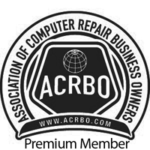 Hello everyone,
Hello everyone,
Because I have an “obsessive-compulsive” personality and because I want to thoroughly enjoy my computing experience, I do everything possible to keep my computer running fast. In Part 1 of this series I showed you two ways to speed up your computer and in Part 2 I showed you three more ways, so thus far we have five ways in all. Let’s not stop yet!
Today in the third and final post in this series, I would like to show you a few more ways to speed up your computer.
6) Compact The Registry. The Windows Registry has literally thousands of entries (many that have ceased to do anything positive), and is growing constantly. Over time it will become huge. You don’t want a huge inefficient registry! After you have cleaned the registry (step 5 in part 2) you should optimize it by making it smaller while improving it’s structure. What to do?
A) Run NTRegOpt (http://www.larshederer.homepage.t-online.de/erunt). Maybe once a month. “The optimization done by NTRegOpt is simply compacting the registry hives to the minimum size possible”. I have used this little gem for years (in Vista with proper administrative privileges) and it works like a charm!
7) Defragment the Hard Drive. Over time, files will break up into chunks and become spread out (fragmented) all over the hard drive. In order to find these files (access the information) your hard drive has to work harder (jump to all the various file chunk locations) which takes more time. You don’t want a fragmented hard drive! What to do?
A) Run the built in Windows Disk Defragmenter (Start>Search Box>type dfrgui>Enter).
B) Run MyDefrag (formerly JkDefrag) (http://www.mydefrag.com). My Defrag is just so good! I’ve been using it for years and it does a more efficient and complete defrag. than the built in Windows defrag. tool. MyDefrag is a “defragmenter and optimizer”. You’ll love it!
8) Get more RAM (Random Access Memory).This is the #1 thing that will increase your systems speed. RAM stores information for your system components (easier to access than the hard drive). The more RAM you have, the easier your machine (CPU) has to work to access this information. If you don’t have at least 2GB of RAM, get more! What to do?
A) Go to Crucial (http://www.crucial.com). Run the Crucial Memory Advisor Tool (“to find guaranteed-compatible memory for your computer”), buy the memory (from Crucial) that is right for your system and install it. Installing memory is not difficult and there are many video tutorials on the Internet.
9) Get a Graphics Card that has it’s own memory. I’ll just touch on this briefly. Some graphics cards don’t have any memory of their own and they must “steal” memory from RAM. If you don’t have a “dedicated” graphics card get one in your next computer and any programs that are graphic intensive will be speeded up considerably. If your video card is “onboard”, you can turn off your systems graphics (visual effects): Control Panel>Performance Options>Adjust for best performance (visual effects).
10) Uninstall Unused Programs. If you have programs on your computer (hard drive) that you no longer use, uninstall them and then run the registry cleaner. Unused programs take up valuable disk space and when you remove them you will help increase your computers speed. What to do?
A) Run Revo Uninstaller (http://www.revouninstaller.com). I have been using Revo Uninstaller since it came out (about a year and a half ago), and it is just so much better than the built in Windows Add/Remove Programs. Revo Uninstaller will uninstall the program and then remove additional files, folders and registry keys. Absolutely amazing!
Professor Randy says: Be happier and more productive with a computer that doesn’t slow you down – adjust your computer for maximum enjoyment and productivity!


